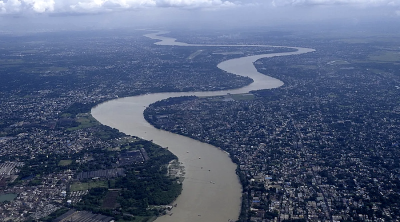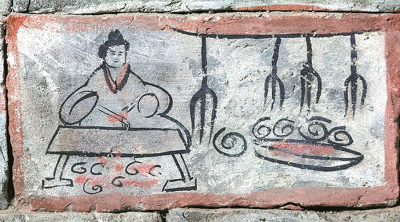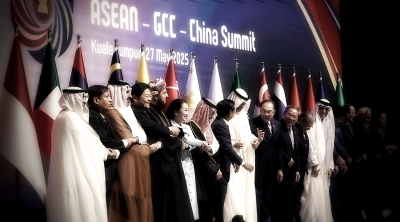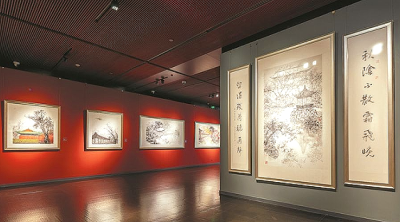
In the quiet stillness of 4:00 a.m., while most of the world slept, the regional balance of airpower over South Asia shifted—irreversibly.
What the world witnessed was not merely a clash of fighter jets, but a doctrinal disintegration.
India, long perceived as the aerospace hegemon of the subcontinent, found itself paralyzed—by silence, by distance, and by a seamless Chinese-Pakistani aerial architecture.
From Balakot to the void
In 2019, the Indian Air Force (IAF) breached Pakistani airspace with confidence, striking targets in Balakot. That era is gone.
In May 2025, even with nearly 180 aircraft assembled along the western front, the IAF stopped 300 kilometers short of the Line of Control.
Why? Because the sky they once knew had been rewired—from above, from afar, and without a single warning shot.
Chinese J-10Cs flying in passive stealth mode, supported by Pakistan’s Erieye AWACS and Chinese satellite-fed targeting, transformed the airspace into a vast digital minefield.
A Rafale fighter, worth over US$250 million and fortified with France’s most advanced electronic warfare suite, never stood a chance. It was ambushed mid-flight, without a radar lock, without a shot fired in return.
This was not a dogfight. This was a digital decapitation.
From platform power to network dominance
India, under Prime Minister Narendra Modi, had bet on prestige platforms: the Rafale, with its Spectra system, was to be India’s silver bullet.
The thinking was conventional—buy dominance, project strength.
But what unfolded was a strategic unmasking. Pakistan, with quiet but calibrated Chinese support, did not outgun India. It out-networked it.
Every system operated in cohesion: sensors, radars, satellites, and AI-guided PL-15 missiles fired from safe stand-off distances. The kill chain was seamless, and fatal.
A single Rafale fell, but with it collapsed a decade of doctrinal assumption—that technological superiority at the platform level guarantees superiority in battle.
It does not.
China’s silent role, loud consequences
What makes this moment historic is not the downing of a jet—but the visible fingerprints of China’s doctrine of asymmetric air dominance.
There were no J-20 stealth fighters in the sky. No Chinese flags on radar screens. Yet the architecture was unmistakably Chinese:
■ PL-15 missiles with a range exceeding 300 kilometers.
■ Erieye AWACS integrated with Chinese targeting intelligence
■ J-10C aircraft flying in emission-controlled stealth
■ AI-assisted satellite fusion eliminating the Rafale’s reaction time
This was not just a tactical assist. It was a strategic symphony.
From strategic certainty to strategic caution
The psychological fallout is visible.
The Indian Air Force, which once prided itself on forward aerial posture, is now grounded—literally and metaphorically.
Its most advanced fighters are confined to a 300-kilometer buffer. Not because they lack courage, but because they now lack clarity.
India cannot see what hunts it. And what it cannot see, it cannot survive.
Dassault Aviation’s stock has plateaued. France’s defense credibility is quietly questioned.
Meanwhile, shares of Chinese defense contractors such as AVIC and Chengdu Aerospace have surged. The market, as always, is the first to notice when power silently shifts.
Implications for ASEAN and beyond
This is not just about South Asia. It is a warning to every regional and global actor—including ASEAN.
Aerial preponderance is no longer measured by the number of jets or even their make. It is measured by how well they talk to each other, how quickly they sense, and how invisibly they strike.
ASEAN, often caught between American hardware and Chinese innovation, must now ask: How prepared are we for a war not fought in airspace—but in the ether of networks, satellites, and silent kills?
Conclusion: The new grammar of air power
China has revealed something more profound than military superiority. It has exposed the obsolescence of legacy doctrines.
The skies over Kashmir have not merely darkened—they have been reprogrammed.
This is no longer a battle of air forces. It is a clash of systems.
And in that contest, China has written the new rules—quietly, efficiently, and lethally.
India’s Rafales didn’t just fall to missiles. They fell to a war they couldn’t see. And to a doctrine they never prepared for.
(Prof Dr Phar Kim Beng is Expert Committee Member of the Centre of Regional Strategic Studies, CROSS, and Professor of ASEAN Studies at ISTAC-IIUM.)
ADVERTISEMENT
ADVERTISEMENT








































